Almost my entire life I have lived in places marked by duality. I grew up in Derry or Londonderry, a city bisected by the River Foyle, where your religion and political allegiance could be assumed from which name you gave the place.
We lived so close to the Border that the Sunday afternoons of our childhood inevitably involved cross-Border trips for, among other things, Chef Brown sauce (available to buy only in the Republic but so much nicer than any other brands).
Such trips were bookended by the Border crossing where our car would be searched and my father quizzed on the purpose of his trip by teenaged squaddies, cradling automatic rifles, expressing their incredulity at a 40-mile round trip for a condiment.
Later I moved to Strabane, which sits to one side of the River Foyle, while Lifford sits across the water, separated by a hundred yards of bridge through which the Border runs.
I remember as a child crossing the Border checkpoint here too – the Camel’s Hump, as it was known. The journey was memorable due in no small measure to the huge Army hangar that squatted on the Border. There could be no doubt when you had crossed into “the South’.
As a result, for me and for my generation, the Border existed as both a physical and a psychological construct.
One of the absurdities of our childhood Sunday drives into Inishowen was that “the South” was actually, geographically, to the north and “the North” to the south due to the decision in 1920 to leave Donegal out of Northern Ireland despite its place in the province of Ulster.
All of this made some sort of sense to us when we were young. My own children, however, struggle to grasp it because, since the Good Friday agreement, the Border as a physical entity no longer exists. You can cross from Lifford to Strabane without ever encountering a checkpoint now. Indeed, the only way to tell when you have left one country and entered another is by the slight change in the quality of the tar surfacing the roads and the fact that one territory uses mph on signage and the other kmph.
Indeed, crossing the bridge from Strabane to Lifford is as easy as crossing the bridge from the Waterside to the cityside in Derry – which perhaps explains my own fascination with borders and why I choose to set my crime series in the borderlands of the Lifford/Strabane area.
The Border in the Devlin series represents various things; the borderlands are the grey area that most of us inhabit, the distance between what we'd like to do and how we'd like to be, and what we actually do and who we actually are. And perhaps spurred on by notions of the Border as a frontier, elements of the Wild West have surfaced more than once in the Devlin novels; indeed Bleed a River Deep concerns a gold mine opening in Donegal.
Developing relationship
The Border also operates for me as a reflection of how things have changed politically in the North. When I began writing the first book, I deliberately set out not to write a political novel.
I did not believe myself a good enough writer to deal with the North directly and, as a nationalist who grew up in Derry, I had issues with using an RUC character as my main arbitrator of justice. So, I looked to the South, and to Garda Ben Devlin, as a way to allow me to view the North at a remove of sorts.
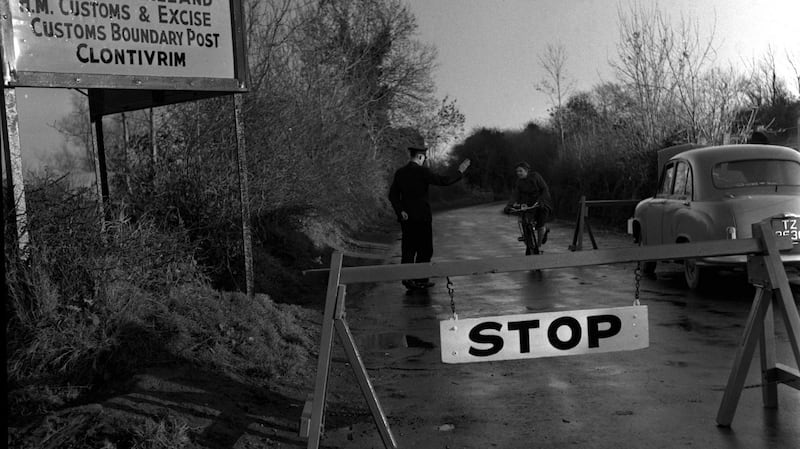
Despite this, in each book I found elements of the Troubles appearing. Borderlands touches on "the disappeared", Gallows Lane concerns men who use religion as a front for violence, Bleed a River Deep concerns the smuggling of people and laundering of fuel across the Border by individuals desperate to establish criminal empires. The Rising was about a dissident paramilitary group using the punishment shootings of drug dealers as a way to gain traction in a fractured community which did not trust the police.
And in all the books, the developing professional relationship between Devlin and Jim Hendry reflects something of how I saw the developing relationship between North and South impacting on the ground.
Devlin crosses the Border frequently into the North. Having spoken to officers on both sides of the Border, that is not unusual. One mentioned his happiest memory of cross-Border co-operation was when gardaí visited the RUC station at Christmas each year with crates of Guinness or when the RUC handed over poachers’ nets to their Garda counterparts to hand into the fisheries authorities in order to claim the £5 reward per net, which then paid for a cross-Border steak dinner.
It is telling then that, by 2009, my attention as a writer moved from the Border and from crimes associated with the violence of the North. The last Devlin, The Nameless Dead, is about grief and those who survive. I believe my fascination with the Border waned as the object itself appeared to vanish from sight.
This, to me, is a key concept. As part of the peace process here, moderate nationalism in the North shelved its aspiration for Irish unity in return for an invisible Border – a version of esse est percipi in action.
So long as we couldn’t see it, we could pretend it wasn’t there. We were free to choose our own national allegiances, whether Irish, British or Northern Irish. The existence of the Border secured the union for those who felt British, but its invisibility hinted at the potential that that might one day change for those who felt Irish. A tightrope balancing act for those in the middle ground had been found.
Dual nature
There can be no doubt about the impact the Border has had on a generation of writers from either side of it. Even a cursory glance at other crime writing shows that.
Other Border writers, such as Anthony Quinn and Claire McGowan, have developed full series of novels exploring the unique criminality which is a feature of Border life, whether people smuggling in Quinn's Border Angels, or the constant intrusion of the past on the present across the Paula Maguire series set in a fictionalised version of McGowan's hometown.
Border settings feature prominently in Declan Hughes's All The Dead Voices, which centres around the present-day effects of a botched assassination attempt on a judge near the Border in south Armagh during the Troubles. In one striking passage towards the end, following an act of extreme violence, Hughes captures the dual nature of the aesthetically stunning Border area and the horrifying events which occurred there:
“After the fire and the smoke, and the debris and body parts scattered about the fields, amid the sulphur and burning flesh, and the savage whooping and hollering of Ice, Red stared across the fields, the heartbreakingly beautiful hills and fields of South Armagh. Was it then that he understood that only great and lasting dishonour and shame would be gained if they won the land back by this kind of slaughter?”
The republican heartland features more extensively in Stuart Neville's The Twelve, which reaches its climax in the Border straddling farmland of Bull O'Kane – a prominent republican who shunned the political in preference to the criminal. Within the book he is connected with fuel smuggling, dog fighting and dodgy land acquisitions through intimidation; as well as being implicated in numerous murders, of course. Many of the activities of Bull O'Kane would not be out of place in Toby Harnden's Bandit Country, a seminal work of nonfiction on the paramilitary campaign in South Armagh.
Smuggling of people across the border is a key plot element of Adrian McKinty's Fifty Grand. However, somehow fittingly for an Irish writer no longer living in Ireland, the border in question is between Mexico and the US rather than in Ireland. Nevertheless, in a visceral, brutal opening scene, the border crossing is inextricably linked with exploitation, violence and ultimately death despite the fact that the actual border itself is an abstract:
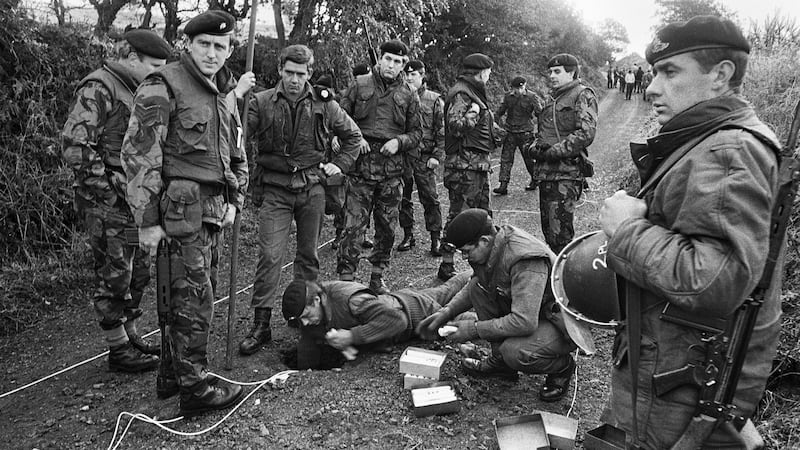
“We made it,” he said again.
“I peered through the window and wondered how he could be so sure. It looked like fucking Mars out there. A thin brown sand worrying itself over a bleached yellow ground. Nothing alive, all the rocks weathered into dust.”
It seems clear to me why crime writers might have been attracted to the darker elements of border settings – the demarcations of power, clashes of cultures, jurisdictional conflicts, crimes, murders and various forms of smuggling all sit easily in a crime narrative.
I did wonder, though, how non-crime writers who choose to write the area might represent it. The truth of the matter is, though, that the Border isn’t really used in crime fiction any differently than it is in non-genre writing. And, the more I read in other forms and genres, the more I became convinced that any book set on the Border must have an element of crime about it for, in literature at least, the two seem almost synonymous.
Religious division
The divisions between North and South, Protestant and Catholic, and the attendant violence this bred would appear to be the most obvious trait of all Border fiction.
For years the Border has been the crack in the pavement through which people could disappear to evade justice. Those on both sides who wanted to carry out cross-Border raids exploited jurisdictional anomalies between the two police forces on either side.
If ever something would help reinforce feelings of social division and the tribal mentality of both religion and politics in Ireland, surely a Border crossing would do it. And this is reflected in the literature of the place.
Eugene McCabe's beautiful short story Heritage begins with Eric O'Neill recalling how "a week ago he had watched a gunfight between British soldiers and gunmen across the river in the Republic". The story itself involves Eric having to deal with a death threat against him and his growing knowledge of his father's involvement with a Catholic neighbour. McCabe's strength in the piece, as in all his work, is his understanding of the complexities of relationships.
Most tragic of all is the unrequited nature of Eric’s relationship with Rachel, with his being unable to touch her because his mother has brought him up to believe it is morally wrong. Most robust in defence of this morality is his uncle George. He thinks nothing, however, of killing two neighbours with farming implements in revenge for the murder of fellow UDR men.
The story perfectly encapsulates the absurdity of the religious division, and of course the tragic consequences of that absurdity. The seeming contradiction of religious hatred and the inherent hypocrisy are illustrated in one scene when Eric goes to church. After the service he stands in the churchyard with a friend, looking across the river which marks the Border to “the lime-washed Catholic church half a mile away . . . a full congregation funnelling through the square porch separating their graveyard.
“Bees from a hive,” Eric said.
“Wasps,” Joe said.”
The closeness of the two churches, and the passing reference to the graveyard seem to sum up McCabe’s depiction of the area in one scene.
Colm Tóibín recalls in Bad Blood, his reportage piece on the summer he walked the Border, how murder squads used the Border for cover. In one particularly strong section, he mirrors McCabe to an extent, placing together two murders in one area, one that of a RUC officer, the other an IRA volunteer:
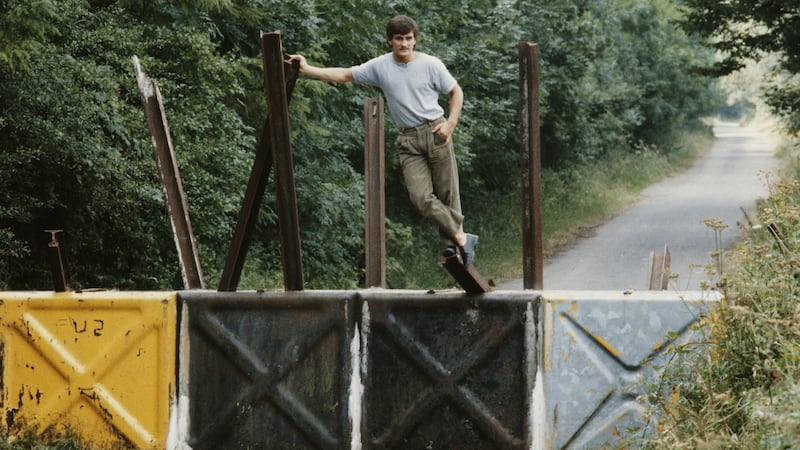
“One was a Catholic, the other a Protestant; one lived just south of the Border, the other just north of the Border; both died violently of bullet wounds in the same year, 1986, within a few miles of each other, one in April, one in July. Both had large funerals. It is possible that the man who died in July had been present as the first one died; it is even possible that the man who died in July was killed in reprisal for the first death; it is also possible that neither of these things is true; but it must be said that some people believed them.”
International boundaries
The RUC officer, John McVitty, was murdered while working in the fields with his 12-year-old son. Tóibín notes that the IRA had escaped across the fields into the South after the shooting. (This is just one of many incidents where Tóibín mentions the Border being used as an escape route – another details the horrific murder of a delivery man who was shot 21 times in the grounds of a primary school while the children were there.)
The second killing, that of Seamus McElwain, was allegedly committed by the RUC or SAS. Shot and wounded while he and another man, Sean Lynch, were crossing a field armed with rifles, he lay in a ditch and was questioned by the SAS for 20 minutes before the RUC arrived. Tóibín tells us that McElwain “had been shot first in the legs, then left there and was later shot in the stomach and then in the heart”. Killings then were committed not just by terrorists.
Nor was the traffic always from South to North. Tóibín recounts various incursions over the Border, when, for example, former first minister Peter Robinson led a group into Clontibret. Likewise he mentions British incursions into the South.
This latter idea is even used by Ian Rankin in his thriller Watchman, which features a scene where Special Branch officers cross into the South on a raid, the Border's function here being seemingly to create a sense of dislocation, to portray for the reader, a man out of his depth. The eponymous Watchman, Miles, finds himself aghast at the realisation that his colleagues in the RUC plan to execute a supposed IRA cell, one of whom protests during the raid: "You're way out of your territory. You better get the hell out of here. This is an international incident."
Rankin makes much of the incongruity of a group planning murder complaining about their enemy’s failure to respect international boundaries.
Vincent Woods's powerful play At the Black Pig's Dyke, also uses the Border as a setting. Merging the ritualistic killings of the Mummers, straw-clad men who moved from house to house performing simple dramas at Christmas, with modern-day terrorists enforcing their criminal activities and indulging their personal proclivities and animosities through murder, Woods paints a bleak picture of Border Ireland, the dyke of the title the Border, steeped in blood.
In one scene, the mummers surround Hugh Brolly who has been doing cross-Border runs for them smuggling items. On his last run, sickened by the violence of the events he has witnessed, Brolly had abandoned the van and contacted the police. The mummers taunt him with a variety of names:
“Traitor.
Collaborator.
Informer.
Grasser, squealer.
Dirty bastard.
Double dealer.
Judas fuckin’ Iscariot.”
This final insult is seemingly the worst – as always in Border literature, the violence is tied inexorably with religious references.
One of Brolly’s tasks in the play is to smuggle across the Border. Inevitably with cross-Border literature, smuggling and the financial disparity between the two territories is a common feature.
Throughout his book, Tóibín cites people commenting on using the Border to their advantage, agricultural grants in the North being significantly more generous in the mid-1980s.
“The locals made a good living out of the smuggling industry; those who were prepared to take the small risk involved in carting farm machinery, spare parts for cars, alcohol, tobacco, and electrical goods across the Border, or those who conveyed animals across in the dead of night could make a lot of money without much work.”
Unapproved roads
Shane Connaughton's 1991 novel, The Run of the Country, is a semi-autobiographical piece about growing up in a Border village with his Garda father in the 1950s and also details Border smuggling. Even here, though, the violence to come is not far away; the book opens:
“He could see the soldiers coming, hear their shouts, and he saw the sunlight breaking silver on his father’s cap-badge. His father knew the terrain, and scoured it daily for armed republicans.”
Connaughton writes about the same traits of Border literature as the best crime writers; religious intolerance, political uneasiness, issues of land-ownership, and, of course, unapproved roads being used by the locals to evade customs and police and smuggle goods – in this case American jeans, boots and butter among other essentials:
“The road they were on was a tightrope. Cavan one minute. Fermanagh the next. Customs men lay in wait. Squad cars patrolled. His father’s eyes scoured the land for his precise location. A lark, a hare, a stone . . . ”
This use of landmarks is also a key feature of Garrett Carr's recent The Rule of the Land where he too walks the Border, focusing on the features which demarcate the boundaries there.
Carr, in his opening chapter, notes that the Border he is seeing today is “in a peaceful yet fragile moment” before Brexit upends everything. In one personal moment, the red soil of a Border crossing brings to mind a memory of his father buying a car which has been parked up, hidden, in a plantation of trees in “bandit country”. The clearly illegal transaction brings the older man some joy: “The Border had beaten him by being there before he was born,” Carr says, “but he claimed some vitality for himself by outsmarting it in small ways”. Even if that means sorties along unapproved roads, strung like tightropes across the Border.
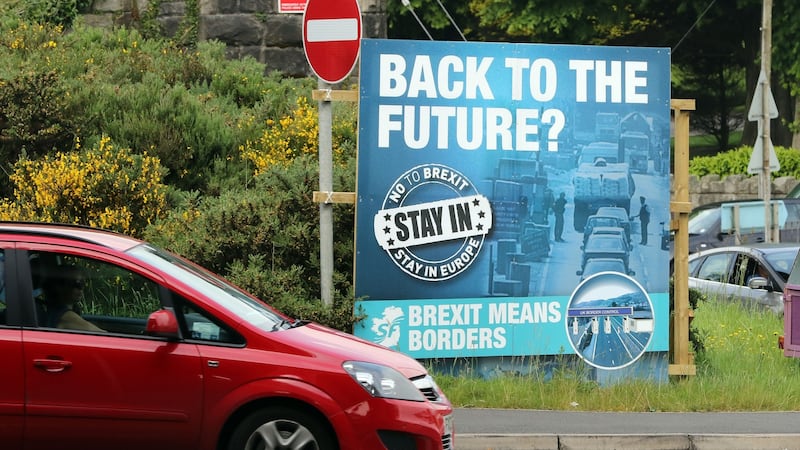
For me, the Border has always been liminal, a point of transition. The Good Friday Agreement, in ways, allowed us to feel we had moved beyond it a little, through it, that while it was still in existence, it could not be perceived, a state of affairs moderates on both sides were happy to accept in return for peace.
It is telling then that the only people in the UK to have recent experience living with a hard border voted against seeing its return.
Tribalism and sectarianism
And for all the talk of technology and frictionless boundaries after Brexit, we should be in no doubt that, whatever of the physical structure, the psychological Border is already hardening.
Tribalism and sectarianism are not far below the surface here, as shown by the impact on the UUP vote when Mike Nesbitt suggested his supporters consider transferring their vote to the SDLP, an olive branch which arguably cost him his position and the party a number of seats in an election which the Belfast Telegraph called "a day of disaster" for the party.
The marching season this year has seen an intensification of it with outbreaks of violence by both sides in Belfast and Derry and the reciprocal burning of Tricolours and Union Jacks on 11th Night and internment bonfires respectively. UVF flags hang from lampposts and IRA slogans are daubed once more on walls. If we look at who supported Brexit in the North, we find figures on the extremes of both sides, patiently waiting the recruitment drive which a Border, whether physical or psychological, will bring.
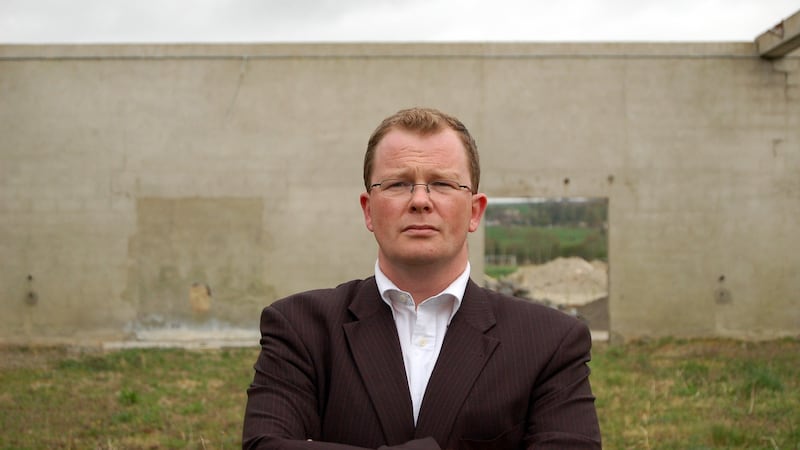
The wounds of 30 years of violence in Northern Ireland are covered with the flimsiest of new skin, but the hurt is still raw, even after 20 years of peace. For those wounds to heal at all, the country needed time to acclimatise to peace.
I wrote my novel, Little Girl Lost, after hearing about a number of incidents during the heavy winter of 2010 when local children were found wandering outside in the snow in their nightclothes, sleep walking though blizzard conditions.
In a news report, the doctor who treated one such child commented that, for the first 40 minutes or so after she was recovered and brought indoors, the child made no sound. Then, suddenly, she started screaming. The delay, the doctor said, was due to “postponed pain”. The child’s body had been so numbed, it needed to acclimatise to normality before it could register the pain it had been unable to feel.
It was, for me, a metaphor for the North. After the Good Friday agreement, many of us were so numbed by the violence of the past we were just glad to have survived it.
Only as we, as a society, became acclimatised to normalcy did we begin to register the pain of our compromises: concerns about cultural erosion, the early release of prisoners, the blocking of social justice issues through abuse of vetoes, how to deal with legacy issues.
And, if as claimed, the victor writes history, what happens when every side attempts to frame the end of violence as their victory? The absence of a single clear victor in the North means competing versions of history, and disagreements over the representation of the past, flourished.
The recent arguments about legacy issues as evidenced by the British government and DUP’s claims that the Historical Enquires Team was disproportionately investigating soldiers reflect that. (The DUP claimed 90 per cent of cases involved the army, while the BBC figures suggest a figure closer to 30 per cent).
Truth commission
It is here where writers become most important. In the absence of a truth commission in the North, it is up to writers to tiptoe between the conflicting versions of history and to tell the truth of the past as we saw it, whether that means considering the impact of the past on the present, or as Adrian McKinty is doing in his superlative Sean Duffy series, revisiting and reliving events of the past with the benefit of hindsight.
And if writers are indeed our truth commission, their truth of the Border is not that it was a place of security and unity, but one of division, crime and violence. And yet, there are those now wishing to reinforce that very Border again, psychologically if not physically.
Brexit is the wilful cutting of that tightrope while the country still balances precariously in the middle,
My greatest concern is that Brexit will force those of us who were prepared to move forward and shelf old allegiances and aspirations in the name of peace to look once more to the tribe, to retreat back into our own communities because the hardening of the Border in any sense requires a reassertion of a single identity.
The Good Friday agreement may not have been perfect, its compromises difficult to swallow, but it walked the tightrope of the Border (a construct associated with violence, criminality and division in the literary psyche of the country) with some skill.
Brexit is the wilful cutting of that tightrope while the country still balances precariously in the middle, with no safety net in place. I do believe we could navigate the issues that currently bedevil the North, given time, space and a sense of fairness and balance.
That those who advocate the return of a Border at such a time are simultaneously abdicating any responsibility for the possible consequences is, to me, utterly reprehensible.
And while those same people, espousing Brexit, have wilfully ignored a plethora of issues, for many of us in Northern Ireland, the fragility of the tightrope we currently cross is by far the most pressing and potentially the most dangerous.
Brian McGilloway is a New York Times bestselling crime novelist and teaches English in Holy Cross College, Strabane. His latest book, Bad Blood, is set during the run-up to the Brexit referendum. This article is based on a paper originally delivered at St Hilda’s Crime Festival, Oxford in August








